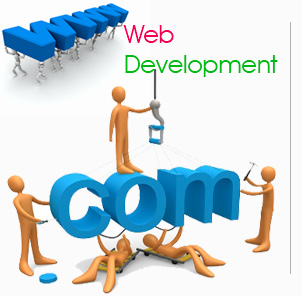
The Advanced AI Based Web & Business Programming program prepares you to enter the job market with the knowledge and skills to design, write, implement, debug, enhance, and maintain business software applications on PC platforms.
The curriculum in the Advanced Web & Business Programming program focuses on key areas such as: Object-Oriented Programming, Graphical User Interface (GUI) design, Relational Database processing using Structured Query Language (SQL), PC-based development tools, as well as an introduction to project management and effective communication skills.

› Java › SQL › XML
› GoLang › HTML5 › JavaScript
› Web 3.0 › PHP › Blockchain
› Perl › Python › MYSQL
› .NET › C › C++
Online sales are skyrocketing as consumer confidence in Internet shopping soars, and retailers of all sizes are opening their doors in cyberspace. With this fast-paced surge comes a cultural shift and change in consumer expectations. The online store is no longer merely a shop window to a catalog of bargain basement products.
Today, consumers expect speed, simplicity, and storelevel customer service with easy access to product information. In return, they are increasingly open to keeping personal information such as payment details and shipping addresses on record, and to providing details about current and future purchasing needs.
By following industry best practices for site development, many organizations are gaining consumer confidence and trust. However, keeping up with these growing trends can also require advanced Web features and, in many cases, a fully integrated multi-channel approach. For IT groups, these requirements translate to personalizing the customer experience while maximizing the potential of IT investments to help the organization gain competitive advantage.
Simplification helps boost speed and agility.The Fortune IT Services is constantly looking for ways to simplify IT management while enhancing the shopping experience on the fortuneipl.com Web site. Since customers began purchasing from the site in 2006, online shopping has soared. For Fortune IT, continually monitoring site performance and studying page-level metrics and conversion rates have been key in understanding the user experience. By evaluating and deploying additional Web capabilities, Fortune IT is quick to respond to changing requirements and trends in the online marketplace.
Programming with the purpose of making homepages is often called web programming or web development. One of the most popular web programming languages (also called script languages) is PHP.  Combined with a MySQL database PHP can generally speaking be used for building websites of all types and sizes. By 'dynamic' homepages, we mean that the content of the pages is changeable - and typically dependent on
the visitor's interaction with the web site.
Combined with a MySQL database PHP can generally speaking be used for building websites of all types and sizes. By 'dynamic' homepages, we mean that the content of the pages is changeable - and typically dependent on
the visitor's interaction with the web site.
Because the Fortune Web site is a key sales channel, the Fortune IT team understands the importance of usability and brand perception on the Web. A site project team regularly draws on human factors resources and site evaluations to help ensure an optimum user experience. Recent enhancements to the cart checkout system were aimed at simplifying the checkout process and reducing cart abandonment. In addition, key technologies particularly the Asynchronous JavaScript and XML (AJAX) technique for creating interactive rich Internet applications (RIAs) and the Microsoft ASP.NET AJAX application framework for developing AJAX functionality can help increase site performance, make the user experience more engaging, accelerate response times, reduce the load on back-end processing, and reduce development effort.
A hosting solution with PHP from One.com is your best starting point for a user-friendly and advanced web site. The MySQL database along with PHP makes up the ideal combination for the development of web sites with varied and rich, interactive user experiences. These are tools that can be used to attract your visitors to spend more time on your web site and to stimulate the customers interest in purchase if you have a web shop on your site. PHP and MySQL are included in all web space subscriptions with One.com.
To communicate with a computer, you must use a language the computer understands. Therefore a program is constructed in a certain language that is understandable by the computers that are going to run the program. The text that makes up the software is normally called the program's 'source code', no matter if the program is executed for example locally on a computer, or on a cell phone. An example of a program that runs on a web server is One.com's web editor WebCreator that is located on a server and via the Internet accessible from any computer.

To those who are not familiar with programming, PHP scripts as such may seem like incomprehensible and meaningless characters. But PHP takes care that the source code is transformed into web pages with text, images and other content that makes sense to the human user.
With programming languages as for example PHP, ASP, Perl and CGI it is possible to develop dynamic websites. This means that a website's content and appearance can be programmed to adapt itself to each individual visitor in a way that everybody no longer see the same unchangeable website.
HTML (Hyper Text Markup Language) is the original and most fundamental code that the pages of the Internet are made of. HTML is still used for the basic functions, but since the first use of HTML in the beginning of the 1990'ies several other web technologies have evolved which are capable of much more than HTML.
PHP was invented by the programmer Rasmus Lerdorf in 1995 and has attained enormous popularity as the leading open source web technology. PHP and MySQL being open source means that their source code is freely and openly available to developers around the world and that they are free to use.
Dynamic websites provide lots of advantages. The user can interact with the website in more complex ways by for example making a purchase in a web shop, writing a message on a blog or in a guestbook. Examples of advanced dynamic homepages are discussion boards, blogs and web shops to say nothing of the most famous PHP based web site: Facebook.com.
When an Internet user enters the web site, a series of information is exchanged between the user's computer browser and the web site that is located on a server and accessible via the Internet. The browser reads the HTML and PHP-code it finds on the web site and transforms the code to text, images and movies that make sense to the human eye.





